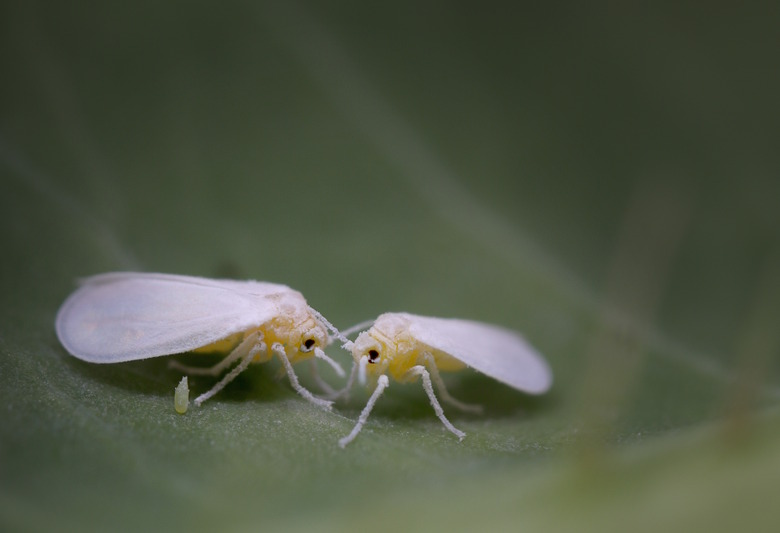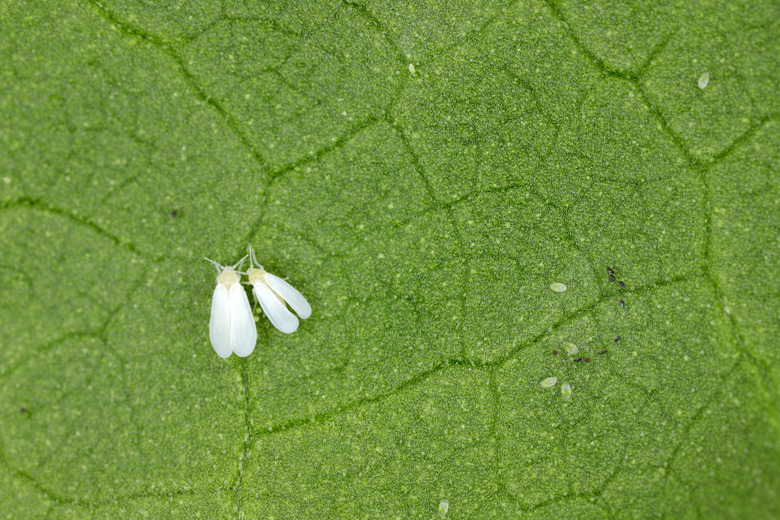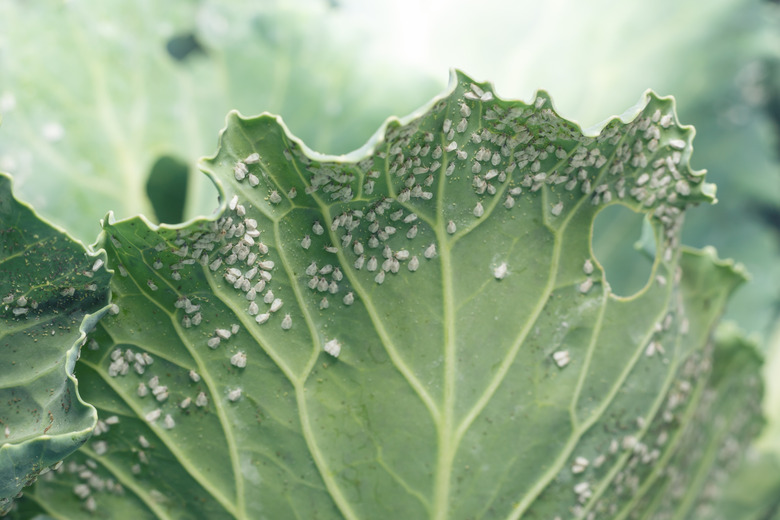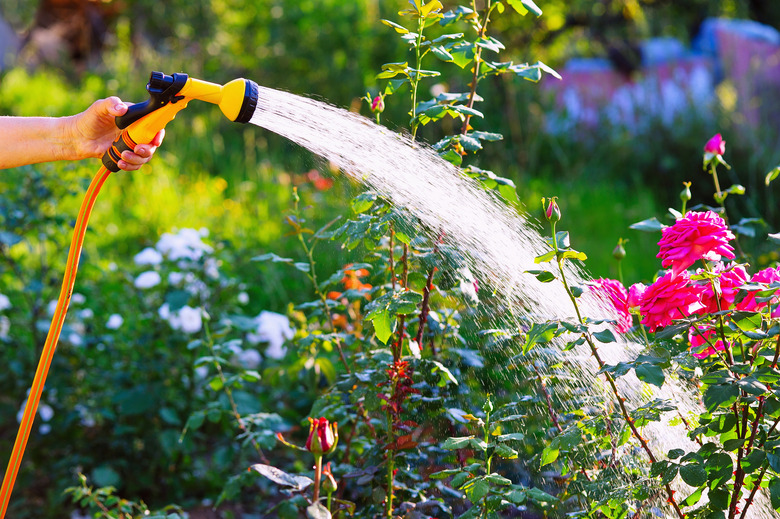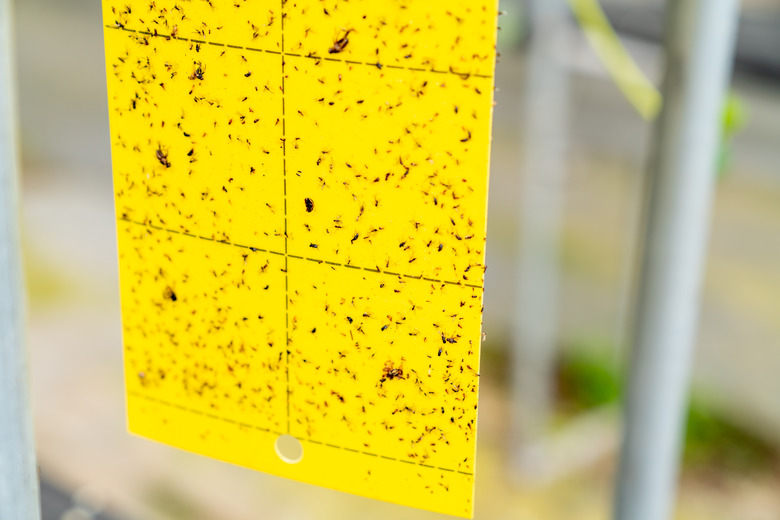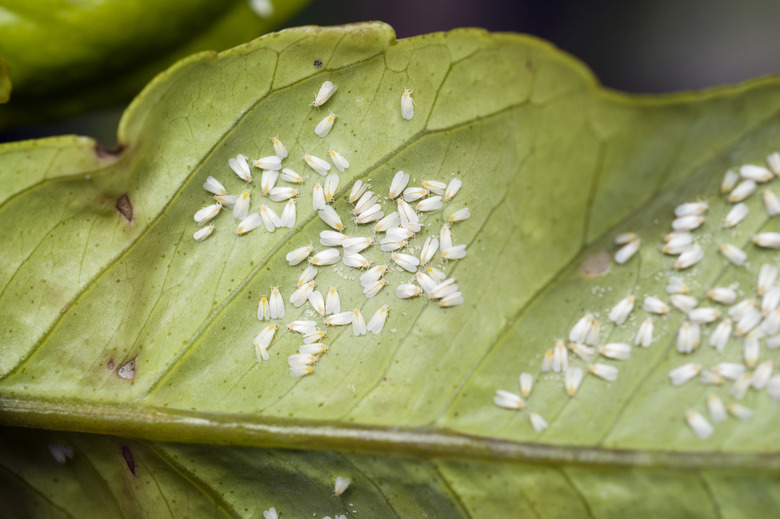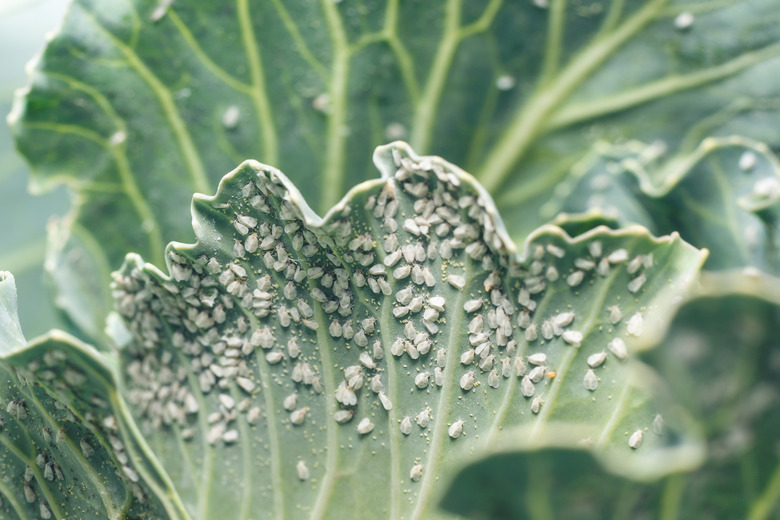How To Get Rid Of Whiteflies
We may receive a commission on purchases made from links.
If you go out to water your plants only to have scores of tiny little white bugs fly away when the leaves move, chances are you have a whitefly infestation. These insects may be small, but they can be quite problematic for plant lovers tending to either outdoor or indoor plants, as whiteflies can quickly overtake a plant and suck out the life-giving sap inside. If that weren't enough, the sweet, sticky substance they leave behind, known as honeydew, attracts other garden pests and encourages the growth of fungal diseases in already weakened plants. Luckily, whiteflies are simple enough to kill even without commercial pesticides.
What Do Whiteflies Look Like?
What Do Whiteflies Look Like?
- Species name: Whitefly (Aleyrodidae spp.)
- Physical characteristics: White or pale yellow, triangular in shape, and around 1/12 inch long.
- Wings or wingless? Wings
- Color/species varieties: There are hundreds of whitefly varieties in the world, but most only
infest a handful of host plants. There are a few whitefly species that
infect a wider variety of plants; in the United States, this includes the silverleaf
whitefly, greenhouse whitefly, bandwinged whitefly, and giant whitefly. The
most common variety in the Southern U.S. is the silverleaf whitefly, while the giant
whitefly is the most common in California.
- Life cycle and appearance: Adult
whiteflies lay eggs on the underside of plant leaves. The nymphs that hatch from the eggs are white with small, oval bodies with no visible wings, legs, or
antennae. Eggs can hatch and reach full maturity within 16 days, though the
process takes longer in cooler weather. Both adults and nymphs suck the juices
from plants. - Whiteflies vs. mealybugs vs. aphids: When adult whiteflies have flown off infected plants, nymphs,
eggs, and honeydew left on the underside of leaves can resemble the telltale signs
of mealybugs. Also, aphids
can sometimes appear similar to whitefly nymphs, and their castings may
sometimes look similar to adult whiteflies. This makes sense since mealybugs,
aphids, and whiteflies are closely related, but while what is left behind on the
bottom of a leaf may resemble other pests, the winged adults that evacuate from
disturbed leaves are always indicative of a whitefly infestation.
How to Get Rid of Whiteflies
How to Get Rid of Whiteflies
When it comes to the control of whiteflies, your approach should vary based on whether you are dealing with houseplants or outdoor plants since not all solutions are practical for all situations. It's also worth noting that while locations in U.S. Department of Agriculture plant hardiness zones 7 and lower can typically rely on cold winter weather to kill off whiteflies on outdoor plants, whiteflies in zones 8 and above can overwinter outside and can reproduce all year long, making the pest a much more serious problem in those areas.
Spray Plants With Water
Carefully spray outdoor plants with a garden hose to knock off whitefly nymphs and eggs. Use a spray that is hard enough to spray off the pests without knocking off the foliage and don't be afraid to use your hands to help wipe away the insects as well. Target the underside of leaves and do a thorough inspection of the plant before you're done to make sure you washed away all signs of the insects. Be sure to manually unroll any curled leaves to uncover any hiding whiteflies. It's typically best to spray plants in the early evening to avoid accidentally spraying beneficial insects or pollinators.
For indoor plants, you can modify this approach without soaking your kitchen or living room by spraying plants with a spray bottle with a jet setting or using a garden hose turned on low. Always take the plants outside before spraying so the removed insects aren't left in your home.
Repeat this process every few days until you've had no signs of whiteflies for a few weeks.
Insecticidal Soap
While you should avoid using commercial insecticides on whiteflies because these pests are largely resistant to them, beneficial insects that pollinate plants or help eliminate aphid or whitefly infestations are susceptible to these poisons. That being said, there's nothing wrong with commercially available insecticidal soaps, as these do kill whiteflies and only kill on contact, so you don't have to worry about harming good bugs as long as you spray carefully. You can also make your own insecticidal soap by combining 1 tablespoon of unscented Castile soap with a quart of warm water in a spray bottle.
Spray these products in the evening, as the soap can result in plant leaves getting sunburned while still wet. Cover both sides of your plant's leaves, ensuring the undersides are entirely coated since the soap only kills when applied directly to an insect. You may choose to rub in the soap mixture directly with your fingers to ensure even coverage, which will also allow you to squish the pests at the same time. Reapply the soap every four days or so until the whitefly population is fully eliminated.
Apply Some Oil
Neem oil and horticultural oil can both be used on infested plants to kill nymphs, eggs, and adult whiteflies. Neem oil can also repel adult whiteflies due to its strong scent. It's best to only use these oils on plants growing out of direct sunlight, or the oil may trap heat and harm your plants.
For best results, use neem oil or horticultural oil to make a spray that will help you apply it evenly to the underside of leaves by combining 1 teaspoon of neem oil or horticultural oil, 1 tablespoon of Castile soap, and 1 quart of water. Apply every four days until the infestation is fully eradicated.
Try Vacuuming the Pests
A small, handheld vacuum can also be used to suck nymphs, eggs, and adults from the underside of leaves but be careful to vacuum gently. Vacuum the leaves every few days until the infestation has ended and always empty the vacuum canister in an outdoor trash can after every use.
Bring in the Natural Predators
Whiteflies have quite a few natural predators, which is part of the reason they hide on the underside of leaves. Make your garden attractive to hummingbirds and dragonflies, who love to feast on whiteflies, by adding a birdbath or pond to your garden and planting native flowering plants.
Use Sticky Traps
While eliminating a whitefly infestation requires killing not just the adults but also the nymphs and eggs, traps that catch adults can help you monitor the situation to determine if you need to continue with your pest control efforts or if the insects are all already dead. You can buy premade traps designed for use on gnats or make your own by combining equal parts petroleum jelly and dish soap and spreading the mixture on yellow index cards. Yellow sticky traps work best because whiteflies think yellow looks like new foliage, which is their favorite food.
Prune Your Plant
For smaller infestations, pruning away infected sections of the plants can help stop or at least slow your problem. For major infestations, pruning the severely infested portions of the plant can help keep your plant healthier so it will stop spending energy trying to repair dying stems and leaves.
Base your cutting plan on the extent of the infestation. For minor infestations, cut away any leaves with visible eggs, nymphs, or honeydew. Selective pruning can be used alongside sticky traps to control a small whitefly population entirely.
For more severe infestations, cut off severely damaged portions of the plant along with leaves that have large populations of whitefly eggs and nymphs but be sure not to overprune your already stressed plant. Ideally, you should not cut off more than a third of the foliage. Apply insecticidal soap, neem oil, or horticultural oil to help kill off the remaining insects.
Always use sharp pruning shears and be sure to sterilize your tools after use. Place removed stems and leaves in sealed plastic bags and throw them away in an outdoor trash can away from any other plants. Do not compost these materials.
Where Whiteflies Come From
Where Whiteflies Come From
Where you live may affect how you get whiteflies. In zones 8 and above, whiteflies overwinter in plants and emerge in spring, when they can fly from one infested plant to any other plant in the immediate area. They can also fly inside people's homes through open windows and doors to infest their houseplants.
In zones 7 and lower, whiteflies are a much less common problem. In these areas, whiteflies stuck outdoors during the winter die off, so most infestations start with a person bringing a new plant home from a greenhouse or someone else's home. However, whiteflies can still spread outdoors during the summer even though they will typically die off in the winter.
In warm climates or indoors, whiteflies can reproduce all year long; otherwise, they lay eggs in spring and summer. Adult females can lay over 400 eggs that will hatch between a week and a month, meaning infestations can spread very quickly.
How to Prevent Whiteflies
How to Prevent Whiteflies
The best way to prevent whitefly infestations is to always inspect the underside of leaves when you bring home a new plant, taking extra care when inspecting new foliage. You may also quarantine new plants away from others after bringing them home so you can monitor them for pests and disease before they have the opportunity to infest other plants. Even after your plants are in their permanent location, continue to look at the underside of their leaves to monitor for infestations.
Try to avoid bringing home host plants that are popular with whiteflies in your area. As an example, giant whiteflies, the most common variety in California, are particularly attracted to hibiscus, orchid trees, banana trees, and mulberry trees. The most common variety in the South is the silverleaf whitefly, which is fond of broccoli, melons, cabbage, cotton, and squash. If you choose to grow these plants despite their attractiveness to whiteflies, place traps around the garden to help you monitor for the pests so you can stop them at the first sign of an infestation.
Avoid overpruning or fertilizing with too much nitrogen, as these practices result in a lot of new growth, which is particularly attractive to whiteflies. Keep plants healthy with a proper watering, pruning, and fertilizing schedule that will ensure they are healthy enough to survive an infestation. Learn to identify beneficial insects in your garden and be sure not to harm these creatures with pesticides.
Consider growing whitefly-repelling plants, such as mint, parsley, basil, chives, dill, marigolds, catnip, onion, cilantro, pineapple sage, and bee balm. Add earthworm castings to your soil, which repel whiteflies as they decompose while also fertilizing your plants.
Signs of Whitefly Damage
Signs of Whitefly Damage
While the most obvious sign of a whitefly infestation is a bunch of small white insects flying away when leaves are disturbed, this is not the only indication that your plant has been infested. Also look for small nymphs or eggs that may be laid in a random, circular, or linear pattern. Another common sign is white blotches of the substance they leave behind, known as honeydew.
It's important to address whitefly infestations as soon as possible because they can harm your plants both directly and indirectly. Direct damage comes from the nymphs and adults sucking the sap from the plants, which can leave plants too weak to photosynthesize. As a result, growth may become stunted, leaves may turn yellow and wilt, and the foliage may start to fall from the plant.
Whiteflies may also indirectly injure plants by transmitting viruses from diseased plants to healthy plants. Additionally, the sticky honeydew they leave behind is often colonized by a fungus called sooty mold. This mold makes leaves look dirty and black, but it will not typically harm plants unless it is so overgrown that it stops light from reaching the leaves. Sooty mold can be removed with a steady stream of water, which is another reason it is advisable to spray down plants infested with whiteflies.
Honeydew is sweet, so it is known to attract ants, particularly Argentine ants. There are many ant species that will attack beneficial insects to protect the whiteflies that create honeydew. If you notice ants climbing around your plants, this could be another indication that you have whiteflies.
References
- Master Gardeners of Ventura County: Controlling Whiteflies in Your Garden
- Homestead and Chill: Homemade Organic Garden Soap Spray Recipe: Kill Aphids & Other Pest Insects
- Wallygro: How To Get Rid of Whiteflies on Houseplants
- The Old Farmer's Almanac: Whiteflies – How to Identify and Get Rid of Whiteflies on Plants
